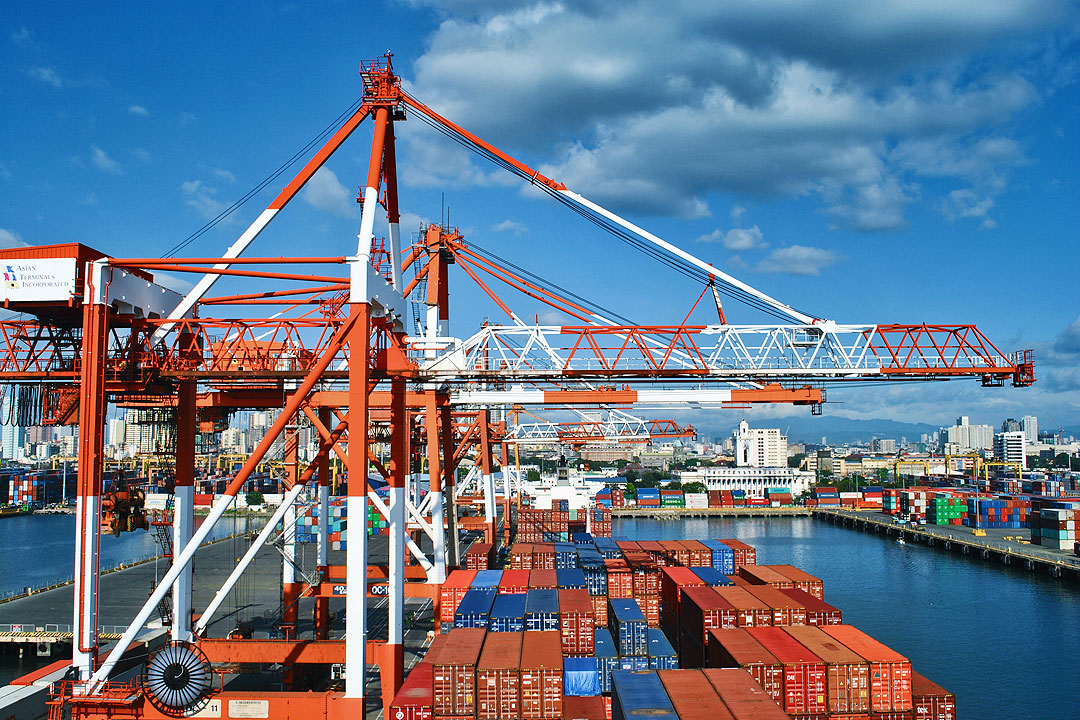
Corporate Watch
By Amelia H. C. Ylagan

“We are pleased to see that our economy has sustained its growth, expanding by 5.6% in the fourth quarter of 2023, resulting in a GDP growth rate of 5.6% for the entire year.”
“While this growth is below our target of 6 to 7% for 2023, it keeps us in the position of being one of the best-performing economies in Asia. Among those that have already released their Q4 2023 GDP growth figures, we follow Vietnam (6.7%) while surpassing China (5.2%) and Malaysia (3.4%).”
“More importantly, our full-year GDP for 2023 is now 8.6% higher than pre-pandemic levels. Moreover, the Q4 economic performance validates the strategies and policy directions outlined in the Philippine Development Plan 2023-2028.”
Above was the official start-of-the-year press statement of National Economic and Development Authority (NEDA) Secretary Arsenio M. Balisacan on the “Economic Performance for Q4 and full year 2023,” released on Jan. 31.
On the same day, the NEDA released the Philippine Development Report, or PDR 2023, to the public. “The PDR identifies the critical programs, projects, and policies begun and implemented in the past year or 2023. As an evidence-based report, it evaluates our country’s performance concerning the outcome indicators identified in the PDP and includes updates on the Marcos Administration’s legislative agenda. As a forward-looking document, the PDR considers and anticipates internal and external developments and scenarios. Finally, it presents the lessons we have learned and lays down plans of action to ensure we remain on track to meet our goals by 2028. I urge the public to read the report to see how we have fared and how we see ourselves moving forward this year,” Mr. Balisacan urged.
Where are we now?
Mr. Balisacan was the keynote speaker at the BusinessWorld Economic Forum, “PH Next: Growth Drivers,” held at the Grand Hyatt Manila on May 22. “We experienced 5.7% growth this month,” he announced. That’s where we are now. Balisacan, chief economic planner for three consecutive presidents — Aquino, Duterte, and Marcos, and former Dean of the School of Economics at the University of the Philippines Diliman (UP), should know.
“Prudent fiscal management has been instrumental in supporting the country’s growth. Following the pandemic, we have sought to reduce our debt and deficit-to-GDP ratios to expand our fiscal space,” Mr. Balisacan said at the BusinessWorld forum. The Philippines Consolidated Fiscal Balance recorded a deficit equal to 6.1% of its Nominal gross domestic product (GDP) in Mar 2024, compared with a deficit equal to 6.2% in the previous quarter.
On the demand side, there is a need for our growth to transition from being mainly consumption driven to being propelled by a more balanced mix of growth drivers. Philippine Statistics Authority (PSA)/NEDA charts showed that the contribution of consumption to GDP in 2021-2023 was 69%, compared to 19.3% from government expenditures, and 43% from investments, pulled down by -23.1% from exports.
On the supply side, contributions of agriculture and manufacturing to growth have declined, while that of services has steadily risen, pointing to the need to strengthen productivity and competitiveness. PSA data for 2021-2023 showed agriculture contributing 0.7%; manufacturing, 15.3%; other industry subsectors, 14.2%; education, 4.8%; ICT, 3.9%; and other Services subsectors, 61.2%.
The Business Process Outsourcing – Information Communication Technology (BPO-ICT) industries have flourished and played a pivotal role in driving service exports. Services export levels were $30.5 billion in 2023, contributing 8.4% to GDP.
The Tourism sector has always been a significant contributor to GDP, with its share reaching nearly 13% of GDP at its peak in 2019, Mr. Balisacan said at the BusinessWorld economic briefing. However, while the economy has fully reopened, the sector has not yet completely recovered. From close to P3 trillion gross value added (GVA) to GDP (a 12.9% contribution), GVA slid to P1 trillion in 2020 (a 5.1% contribution), sluggishly moving up to P1.376 trillion (a 6.2% contribution to GDP).
Mr. Balisacan lamented that while Foreign Direct Investments (FDIs) have risen, the Philippines has lagged behind its dynamic ASEAN neighbors. This indicates the need to further enhance our investment ecosystem and address constraints to doing business, he said. Charts from the UN Trade and Development showed the Philippines most often at the bottom of FDI inflows since 2010, and still the lowest recipient, $9.2 billion in 2022, compared to Indonesia’s $22 billion, Vietnam’s $17.9 billion, and Malaysia’s $16.9 billion.
What’s wrong with us? Mr. Balisacan pointed out that geographic inclusivity remains a challenge to our development and growth, and to our marketability in global competitiveness. Mega Manila, consisting of the National Capital Region (NCR), Central Luzon, and Calabarzon, has, from 2001-2023, contributed more than 50% to GDP (56% in 2021-2023), while the rest eke out their 45% contribution.
The inequalities of opportunities in the regions, and the imbalance in supply and demand factors across the country affect the most crucial factor of production: labor. In the past decade or so, wages have been increasing, albeit gradually. Massive job-generating investments are needed to strengthen the backward and forward linkages between sectors and are crucial to raising wages, Mr. Balisacan stressed.
The Public-Private Partnership (PPP) Code enables the country to achieve inclusive and sustainable growth by establishing a stable and predictable environment for collaboration between the public and the private sectors. The PPPs shall remain a key driver for sustained spending on physical and social infrastructure to boost productivity and raise the country’s competitiveness, Mr. Balisacan confirmed. There are 194 projects under implementation (13 are infrastructure) with total estimated project cost of P3.3 trillion ($59.4 billion). There are 129 projects in the pipeline (32 are infrastructure) with total estimated project cost of P3 trillion ($54 billion).
The Marcos Jr. Administration continues to evaluate, approve and roll out the 185 Infrastructure Flagship Projects (IFPs) under the “Build, Better, More (BBM)” Program worth P954 trillion ($166.6 billion).
“We are confident of meeting our short-term development objectives and we aim for no less socio-economic transformation in the medium term,” Mr. Balisacan promised the Filipino people.
His tandem keynote speaker at the BusinessWorld Economic Forum, representing the private sector, Lance Gokongwei, President CEO of JG Summit Holdings, Inc., pledged the support of the private sector for the government’s PPPs and BBMs, and laid out current individual and cooperative private sector plans and programs to contribute to socio-economic development in the country. The private sector drives 93% of the Philippines’ gross domestic product and employs over 92% of the workforce, per the Asian Development Bank.
“The Philippines is still on track to become an upper middle-income economy next year as long as the growth momentum continues,” Mr. Balisacan told reporters on the sidelines of the economic forum last week (bworldonline.com, May 24). Since 1987, the Philippines has been classified as a lower middle-income economy, according to the World Bank’s earliest records. It still currently classifies the Philippines as a lower middle-income country with gross national income (GNI) per capita of $3,950. Mr. Balisacan said GDP growth must average 6.1% in the next three quarters to hit the government’s 6-7% growth target.
President Ferdinand “Bongbong” Marcos, Jr. has set a target for the Philippines to reach upper middle-income status by 2025. Being an upper middle-income country means having a GNI per capita income range of $4,466 to $13,845.
The World Bank forecasts that the Philippines would be the fastest-growing economy in Southeast Asia this year with a 5.8% growth estimate. For 2025, the multilateral lender hiked its growth forecast for the Philippines to 5.9% from 5.8%. However, the World Bank’s growth forecasts for the Philippines still falls behind the government’s 6-7% target band.
That’s where we are now. Not there yet, it seems.
Amelia H. C. Ylagan is a doctor of Business Administration from the University of the Philippines.